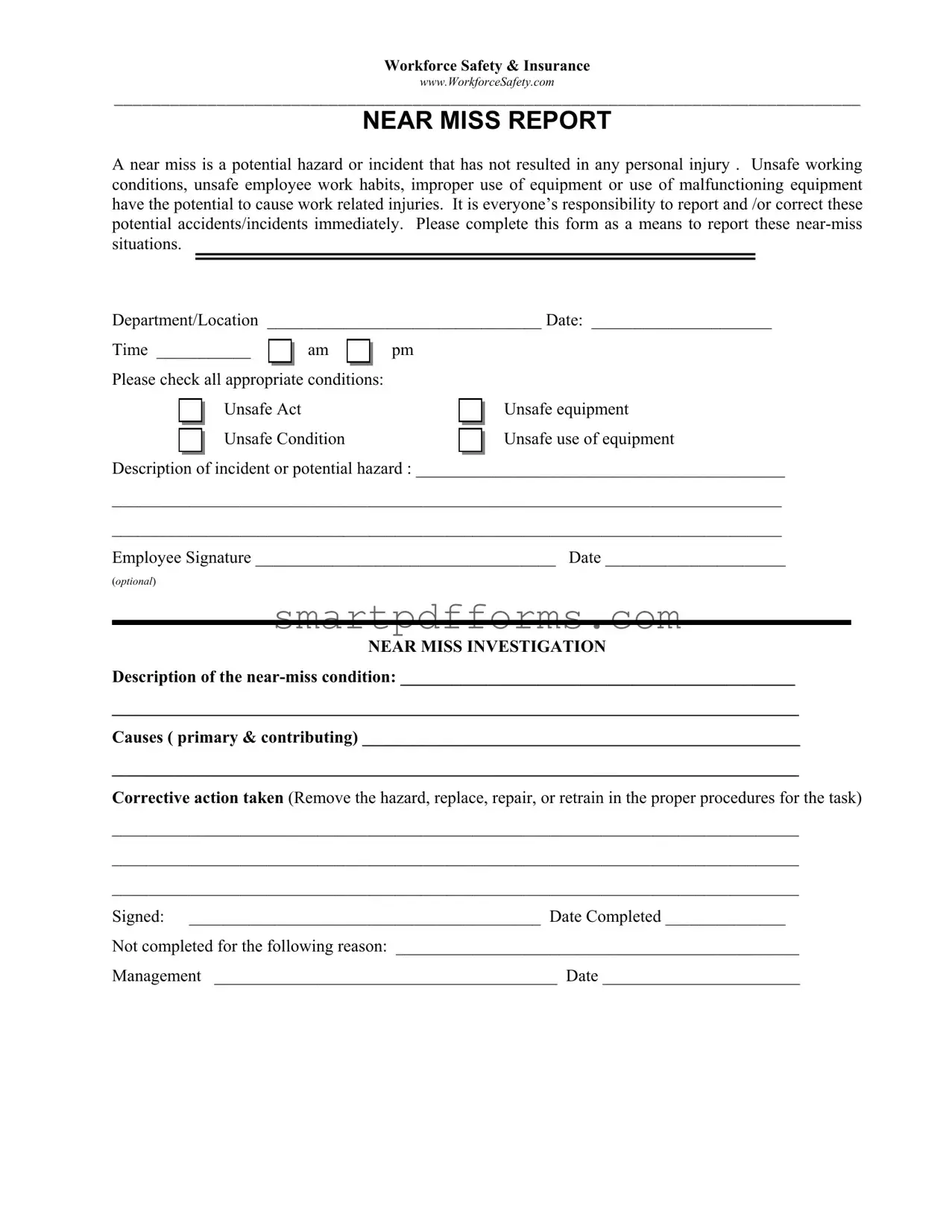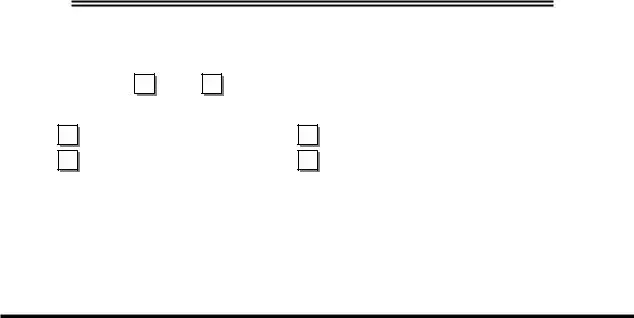Workforce Safety & Insurance
www.WorkforceSafety.com
________________________________________________________________________________
NEAR MISS REPORT
A near miss is a potential hazard or incident that has not resulted in any personal injury . Unsafe working conditions, unsafe employee work habits, improper use of equipment or use of malfunctioning equipment have the potential to cause work related injuries. It is everyone’s responsibility to report and /or correct these potential accidents/incidents immediately. Please complete this form as a means to report these near-miss situations.
Department/Location ________________________________ Date: _____________________
Please check all appropriate conditions:
Unsafe Act
Unsafe Condition
Unsafe equipment
Unsafe use of equipment
Description of incident or potential hazard : ___________________________________________
______________________________________________________________________________
______________________________________________________________________________
Employee Signature ___________________________________ Date _____________________
(optional)
NEAR MISS INVESTIGATION
Description of the near-miss condition: ______________________________________________
________________________________________________________________________________
Causes ( primary & contributing) ___________________________________________________
________________________________________________________________________________
Corrective action taken (Remove the hazard, replace, repair, or retrain in the proper procedures for the task)
________________________________________________________________________________
________________________________________________________________________________
________________________________________________________________________________
Signed: _________________________________________ Date Completed ______________
Not completed for the following reason: _______________________________________________
Management ________________________________________ Date _______________________

